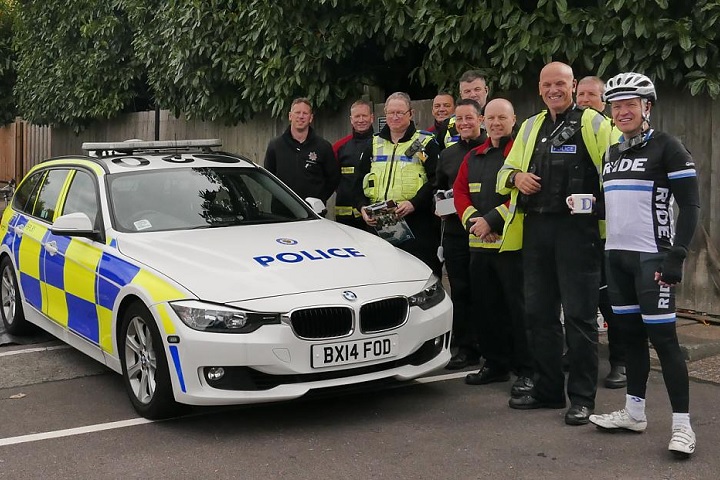
A co-ordinated day of Operation Close Pass exercises took place across England, Wales and Northern Ireland earlier this week.
First devised by West Midlands Police in 2016, Operation Close Pass has since been adopted by police forces across the UK.
The initiative involves plain clothed police officers saddling up to look for motorists who do not leave the required space when passing cyclists.
If an offence is detected, the officer contacts colleagues further down the road to direct the vehicle to a checkpoint where the driver will be offered roadside education from fire service colleagues using equipment which illustrates the safe passing distance.
On 14 April, officers from 39 police forces took part in a day of action, co-ordinated by the National Roads Policing Operations and Intelligence (NRPOI) unit.
Sgt Jon Butler, from the West Midlands Police Road Harm Prevention team, said: “Our primary aim is to maintain the safety of vulnerable road users, while promoting sustainable travel and shared space road use.
“Operation Close Pass is a vital approach in helping us to do that.
“It has enabled us to educate road users on the dangers of overtaking too close, prosecute those who risk lives, and ultimately see fewer vulnerable road users killed or seriously injured on our roads.”
Operation Close Pass is supported by Cycling UK, who has welcomed the day of action.
Since 2016, the charity has provided every police force in the UK with educational tools, including a virtual reality film, to highlight the dangers of close passing.
Keir Gallagher, Cycling UK’s campaigns manager, said: “It’s been amazing to see the growth of Operation Close Pass from being developed by one police force five years ago to now being part of a dedicated national day of action for the first time.
“In that time, the roads have undoubtedly been made safer for everyone thanks to initiatives like this which aim to educate drivers.
“Most drivers don’t intend to intimidate other road users and, often just don’t realise how dangerous it can be if they leave little space between their car and the person on a bike. Roadside education backed by enforcement is key to changing people’s behaviour.”
The Highway Code recommends that road users should give vulnerable road users – such as motorcyclists, cyclists and horse riders – the same amount of room as they would when overtaking a car, typically 1.5m.
It’s not just the proximity to cyclists when passing that is important, it’s also where to pass. My local ‘B’ road is popular with cyclists and also has two or three bends and yet I will see vehicles passing the cyclist..on the bend, on the wrong side of the road. Also, passing on the approach to the bend is quite common, so intent is the driver on not being ‘held up’. Patience is the order of the day.
If the cyclist ahead is not on the carriageway but on the footway, particularly a narrow footway, the same distance when passing should be maintained to allow for wobbles and sudden changes of direction.
Hugh Jones, Cheshire
+1
Highway Code says as much room as for a motor vehicle; so about 3m from kerb as vehicle will be 2m+ wide.
That translates as 1.5 m clearance from a 1m wide bike , 0.5m from the kerb.
This is why cycle lanes should be 2m wide.
Paul, Teddington
+2
Are figures available for the total amount of stops that were put in??
Tony J, London
+1